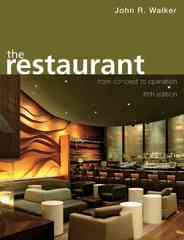Question
Changing Guard atThe Palace The CampaignPalace is a longstanding, highly regarded Australian ad agency, which launched its bestcampaigns and was extremely successful throughoutbeginning ofthe millennia.
Changing Guard atThe Palace
The CampaignPalace is a longstanding, highly regarded Australian ad agency, which launched its bestcampaigns and was extremely successful throughoutbeginning ofthe millennia. By theearly2010, however,theshining star in Australian advertising was losing its lustre and big-name clients were taking their accountselsewhere. When WWP Group,oneofthelargestglobal advertising conglomerates acquired 'The Palace' (as it is referredtoin the industry),its days as astandalone entityseemed numbered. Contrary toexpectations, however, WWP Group,recognizing thevalue ofThe Palace reputation and brand name, decided togive it a secondlease oflife. Paul Sanders, a respected copywriter was put in charge ofits rejuvenation.
So, what had gone so wrong for this once phenomenally successful, much lauded business?
When Sanders joined as Chairman in late 2013, he found himself up against a strongly
entrenched 'us and them'hierarchical structure. The agency 'creatives' enjoyediconic, untouchable statusand there was a largelyimpenetrable divide betweenthem and otheragency staff. As a result ofthis'upstairs-downstairs' attitude, there was little communication orinformation sharing among agency staff and little evidence ofteamwork whendealing withclients. ForSanders, was glaringlyobviousthatthe advertising world had moved onbut not thePalace. It was still stuckin old routines,successful in thepast,but nolonger applicable in a highly competitive Australian market where they were vyingfor businessagainst heavyweight globalconglomerates.
Sanders's change strategy encompasses twokey aims: redesign workplace systemsand structure s toallow greater collaboration and information-sharing; and breakdown the'us and them' divide byfostering a more open,cooperative culture that valued everyone's contribution one which recognized thatgood ideas were notjustthe preserve of
'creatives' (art directorsandcopywriters)------and thataccount executives wholiaisewith
clients play an equally critical role. It was therefore important in terms of project outcomes and customer satisfaction that these two groups understood and respected each other's contribution and partnership.
Though greater project-based teamwork and information sharing, staff are working more closely together and developing a better understanding of the business and the results.
Sanders has adopted a more participative, open management style, communicating his commitment and trust in staff by sharing core financial information with them. New workplace processes, including new remuneration structures based on cross-border teams and collaborative project work have been implemented. In addition, Sanders believes that
'healthy debate' during the creative process is critical to a project's success; therefore, staff need to be willing to share ownership of ideas and be open to constructive criticism.
Boththe physical and psychological barriersthathave been blocking theway forward for thebusiness arebeginning toweaken butthere is still much tobedoneand there will beinevitable casualties along theway. The move toteam-based workgroupsand a more participative, collaborative workplace culture where ideas arenowopen toscrutiny and challenge proved difficult for some agencystaff thatdecided toleave. This has allowed new people tojoin whohave noallegiance totheorganization's past buta clearstakein its future.
Question:
Please describe how "Palace" embraced the principle of ALIGNMENT as part of its Change Path experience. Include references
Step by Step Solution
There are 3 Steps involved in it
Step: 1

Get Instant Access to Expert-Tailored Solutions
See step-by-step solutions with expert insights and AI powered tools for academic success
Step: 2

Step: 3

Ace Your Homework with AI
Get the answers you need in no time with our AI-driven, step-by-step assistance
Get Started


